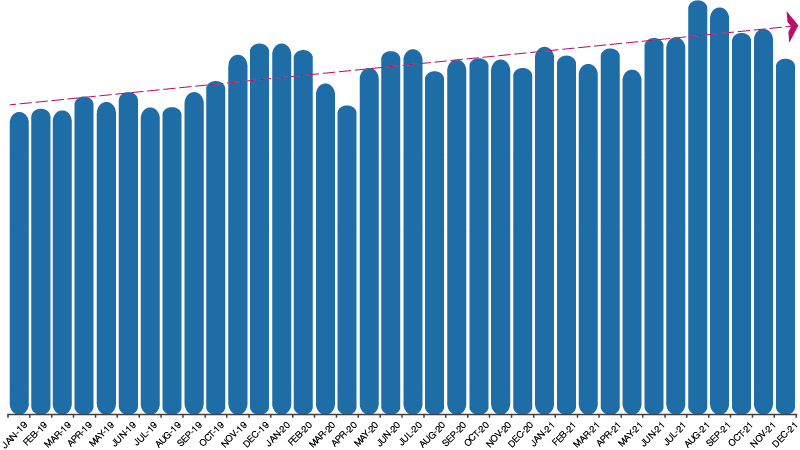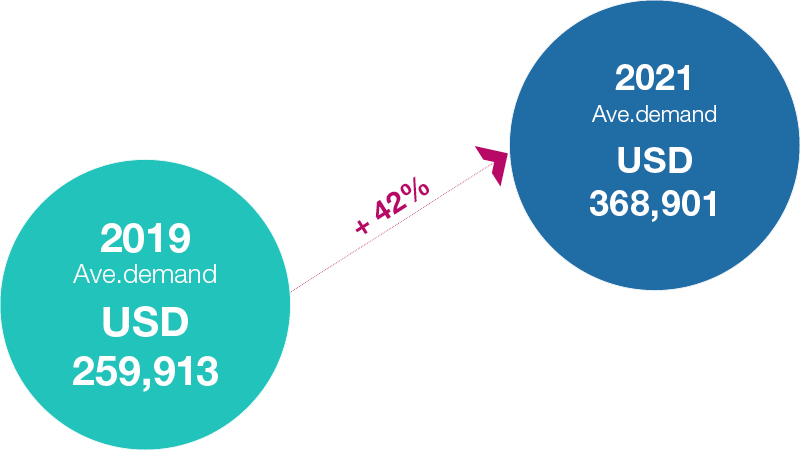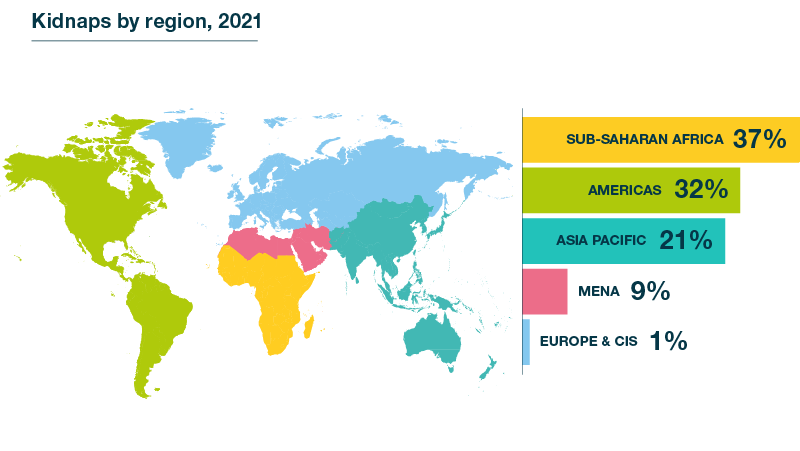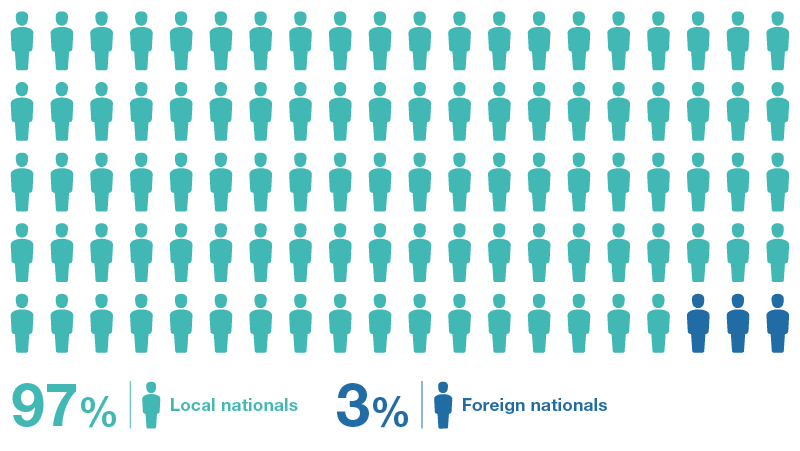Control Risks anticipates that the upward trajectory in global kidnapping rates witnessed since 2019 will continue during 2022. Socioeconomic disparities, under-resourced law enforcement agencies and weak judiciaries underpin kidnapping rates. The COVID-19 pandemic has exacerbated all three factors, and its effects are unlikely to recede in 2022.
Key 2022 trend: Kidnapping rates will continue to rise in 2022

Recorded numbers of global kidnaps, open source January 2019 to December 2021
* Kidnapping remains significantly underreported and true numbers of incidents will be higher. The graph above therefore demonstrates a trend line, rather than absolute numbers.
Key 2022 trend: Ransom demands will continue to increase at super-normal rates
Average global ransom demand, 2019 vs 2021
Amid the economic squeeze caused by the pandemic, we expect ransom demands to rise at super-normal rates.
The average global ransom demand in 2021 was 43% higher than the pre-pandemic average recorded in 2019. This trend was reflected across all metrics. The median global ransom demand rose by 6% (2019: USD 27,703 vs 2021: USD 29,343), while the highest recorded demand in 2021 was 269% higher than that recorded pre-pandemic (2019: USD 28.7m vs 2021: USD 77.3m). Global pressure on purchasing power, exacerbated by above-average levels of inflation, will also impact kidnappers. They will attempt to offset these effects by pushing to maximise each ransom received. However, with victims and their families also under economic strain, kidnappers will likely also need to carry out more kidnaps, tying into our prediction that already high rates of kidnapping will continue to rise.
Regional distributions of kidnap

Sub-Saharan Africa will maintain a dynamic kidnapping environment, with multiple countries (Congo (DRC), Nigeria, South Africa, the Sahel, Mozambique) underpinning its high rates. The region will also likely see the highest number of Islamist extremist kidnaps, given activity levels of groups there. The Americas will continue to account for a significant proportion of the world’s kidnaps.
Mexico maintained its high rates in 2021, while several other countries (Brazil, Colombia, Haiti, Venezuela) saw significant rises in incident numbers, which we expect to continue. Asia Pacific may see a decrease in its proportion of recorded kidnaps in 2022 amid increased opacity in reporting in Afghanistan following the Taliban takeover in August 2021. However, we expect incidents to continue apace there and in India, Pakistan and the Philippines, where gambling-related kidnaps dominate the environment. The MENA region will see high numbers of kidnaps across Iraq, Libya, Syria and Yemen, but reporting will remain stifled, making the region appear safer than the reality when looking solely at absolute numbers of recorded incidents. Isolated incidents will occur in Europe and the CIS, but the region is unlikely to account for more than 1% of global incidents.
Victim targeting

We anticipate a modest increase in the proportion of foreign nationals who are targeted in 2022 as international restrictions on travel continue to ease. Criminals may be increasingly willing to take the elevated risk associated with targeting foreigners, for whom they anticipate a higher ransom than for local nationals. This will be an attractive prospect amid the current inflationary-led super-natural rise in ransom demands.
Key 2022-23 trend: Non-cash payments becoming more common
A key trend that will likely develop during 2022-23 and beyond is that of electronic ransom payments. The slow growth of these reflects the increasing adoption of online and mobile banking systems worldwide.
Brazil is a case study for how quickly such technological advances can change the ransom payment dynamic. The Central Bank of Brazil in November 2020 launched PIX – a free-of-charge instant mobile payment platform. Within six months more than 45% of the adult population had used it to make a legitimate transaction. The platform has also proved attractive to kidnappers, featuring in 22% of ransom payments recorded in 2021. While we expect the vast majority of global demands and payments to remain cash-based, we anticipate that criminals will increasingly exploit similar systems as local communities adopt them. Meanwhile, cryptocurrency payments will remain rare in kidnap cases, but common in extortions.
